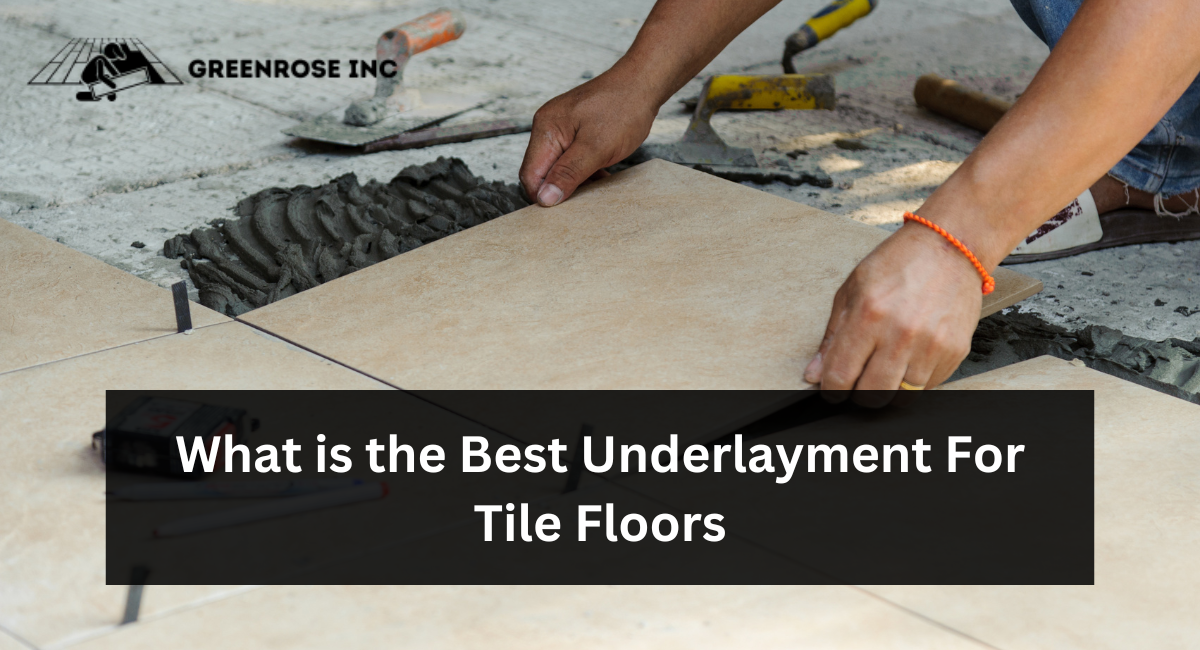Your choice of underlayment will play an essential role in the success of your tile floor installation project. Incorrect underlayments may lead to unevenness, poor aesthetics, and structural damage in your floor tiles.
Your tile type will also play a factor when choosing an underlayment material, with ceramic or stone tiles needing thicker underlays to avoid cracking.
Backer board
Backer board is a tile underlayment material that provides a stable base upon which tiles may be laid, provides moisture barrier protection, and protects floors against the movement or stress of subflooring materials.
Available forms and materials for backer boards include cement backer board, Wonderboard foam, or recycled materials.
Your underlayment choice depends on several factors, including the condition of your concrete slab, tile size and weight, room traffic volume, and more.
Ceramic or stone tiles require thicker underlays than vinyl or wood floors. Thickness also plays a vital role in how much flexing and settling can occur without cracking on the floor surface.
Exterior plywood is often chosen as an underlayment material due to its waterproof bonding adhesives that prevent swelling due to moisture exposure.
For this task, you may also consider water-resistant gypsum boards like DensShield from James Hardie Industries or glass mat gypsum board from James Hardie Industries; both provide easy cutting and installation processes while offering solid support for new flooring installations.
Ditra
Ditra membrane is an easy and lightweight uncoupling membrane designed to prolong tile floors by allowing their substructure (joists or concrete) to expand and contract without impacting them. Furthermore, Ditra helps prevent cracked tiles caused by Iowa’s often freeze-thaw cycles.
Ditra matting’s open rib structure creates a forgiving shear interface that minimizes differential movement stresses that cause tiles to crack or delaminate from their substrate and reduces differential stress differentials that cause tile delamination from subfloors such as plywood and OSB subfloors, where this feature of uncoupling plays a critical role in tile failure and grout dissolution.
This uncoupling function becomes especially crucial on subfloors where lateral movement stress is the leading cause of loss of tile and grout systems over time.
KERDI works well with radiant-heated floor systems and acts as a waterproofing layer. Since KERDI is water-repellant and vapor-permeable, water vapor can escape from subfloor areas to the outside air, helping prevent moisture intrusion into the substrate and extending the tile’s life span.
Furthermore, its slip resistance makes it an excellent choice for installations where vehicular traffic will occur.
Wonderboard
Wonderboard cement backer board is ideal for wet tiling environments like walls, floors, and showers. It offers mold and mildew resistance properties and can easily be cut.
Lightweight yet easy to cut, Wonderboard can be installed onto wood joists or concrete subfloors; however, both must be secured before doing so.
Installing tile floors on Wonderboard requires using an uncoupling membrane and polymer-modified thin-set mortar to ensure that tiles remain securely adhered to without cracking during installation. This provides a flat surface that prevents your floor from warping or sagging over time.
Contrary to plywood, this underlayment is watertight and ideal for bathrooms, kitchens, and other high-moisture environments such as garages.
Equipped with water-resistant bonding adhesives to prevent swelling from moisture exposure and MoldBlock additives, which inhibit mold and rot growth, it offers more durability than gypsum drywall for bathroom walls and floors.
Durock
Durock cement board provides moisture and mold resistance. This makes it ideal for tile floors in bathrooms and kitchens, saunas, swimming pools, and other high-moisture environments such as saunas.
HardieBacker is an ideal material for shower walls due to its durability; it won’t sag over time like other options. It is made with Portland cement aggregate and glass mesh for increased strength and versatility.
Though heavier than HardieBacker, HardieBacker may still prove more suitable depending on your application needs.
Durock must be installed using the proper method to achieve optimal results. Professional tile contractors tend to favor using construction adhesive rather than screws, as this creates a stronger bond that reduces the chance of boards coming loose over time.
Furthermore, using appropriate size screws will ensure panels are secured adequately, preventing cracking or sagging under tile weight – it may even help avoid grout lines that are too close together! Additionally, spacers may help ensure uniformity by maintaining uniform spacing.
Kerdi
Preparing your substrate is crucial to the overall success of tile installation. Achieving plumb and flat surfaces on either the floor or wall surface is essential in eliminating lippage or other imperfections from appearing in your finished product.
Prepping the substrate requires listening and following the recommendations of a tile installer; their experience means they know which strategies work best to avoid costly callbacks later.
Your choice of tile will also influence the underlayment you select; thicker tiles require thicker underlays to support their weight, while in high moisture environments like showers or bathrooms, you may require waterproof membranes to prevent moisture damage to tiles.
Felt underlayment is comprised of dense recycled fibers, making it a fantastic sound absorber and insulator. Some felt underlays even come equipped with their built-in vapor barrier for added peace of mind.
Conclusion:
In conclusion, choosing the best underlayment for tile floors is a crucial step in ensuring the longevity and performance of your flooring investment.
Consider factors such as moisture resistance, stability, and sound absorption to make an informed decision. Whether you opt for cement board, uncoupling membranes, or other options, a proper underlayment enhances the durability and aesthetic appeal of your tile flooring, providing a solid foundation for years to come.

